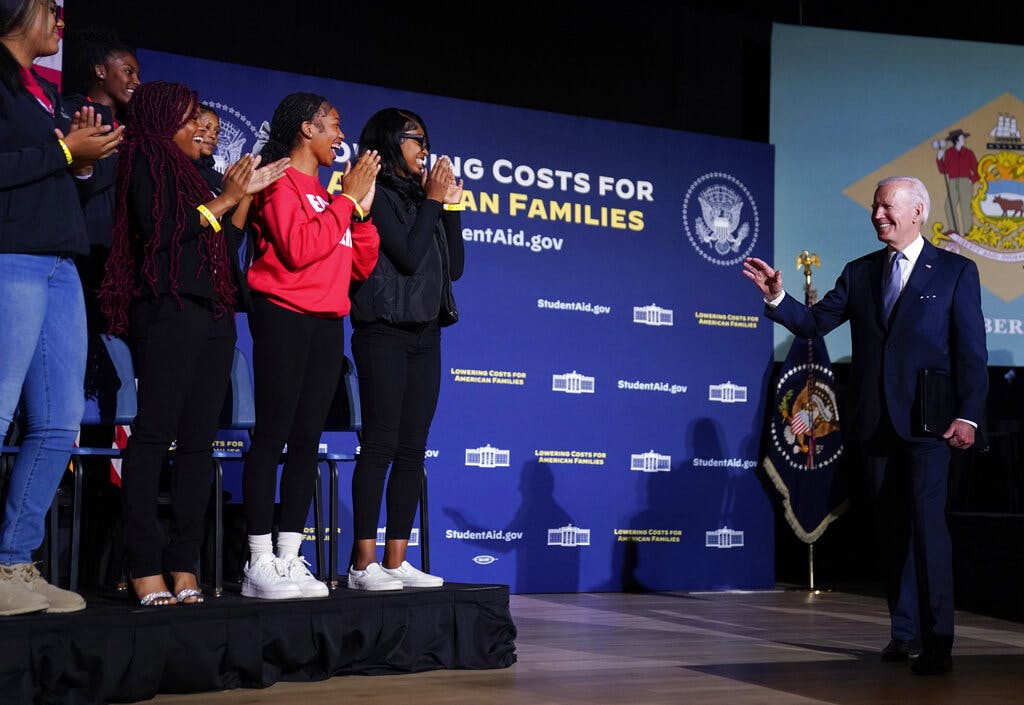Youthquake: Harvard Poll Predicts High Gen Z Turnout in Midterms
‘I’m not sure if we will see a Red Wave or Blue Wave on November 8 — but we will see a Gen Z Wave,’ one pollster says. ‘Gen Z is ushering in a new era of sustained political engagement.’

The youth vote’s record midterm turnout from 2018 will be matched or even surpassed during the coming midterms, the Fall 2022 Harvard Youth Poll is suggesting. Researchers report that 43 percent of 18-to-29-year-olds say they will “definitely” vote next month.
“Across geography, race, gender, and background, young Americans view the world from a starkly different lens than older generations,” the interim director of Harvard’s Institute of Politics, Setti Warren, said. “Elected officials should pay attention.”
The director of polling at the institute, John Della Volpe, said today’s cohort of voters ages 18 to 29 “vote at levels that far exceed millennials, Gen X, and baby boomers when they were under 30.”
He added: “I’m not sure if we will see a Red Wave or Blue Wave on November 8 — but we will see a Gen Z Wave. Gen Z is ushering in a new era of sustained political engagement.”
If expectations hold, and this cohort of young voters proves more politically active, it could mean higher turnout for decades to come, according to the chief executive of Vote.org, Andrea Hailey.
Ms. Hailey said her nonpartisan political engagement advocacy nonprofit’s focus is on “young people, and getting new voters ages 18-30 registered, because we know that creating lifelong voting practices starts now.”
“The Gen-Z and Millennial umbrella now make up over 40 million people. If all young voters show up to the poll, they’ll be the largest voter bloc in America,” she said.
Predicting how Gen Z will vote is tricky, according to an associate director at the University of Massachusetts Lowell’s Center for Public Opinion Polls, John Cluverius, who said that is mainly because not all likely voter models account for youth turnout in the same way.
“It’s a mixed bag” in how pollsters account for young voters, Mr. Cluverius said, but that it’s always a challenge to reach them.
“All polling groups have trouble getting younger respondents, especially respondents 18 to 29 — that’s probably the hardest age band to get to respond to a poll,” he told the Sun.
This forces pollsters to use weighting techniques to correct gaps in data. This is generally successful, though some could prove misleading if there’s a surge in turnout among young voters.
One factor that could drive turnout, according to Mr. Della Volpe, is concern about the direction of the country, school shootings like the 2018 Parkland massacre, and generalized “fear about their future.”
Key to these fears, according to the polling, is a pervasive feeling that young Americans’ rights are under attack, among them the rights of women, minorities, and LGBT Americans.
The survey found that 59 percent of respondents felt like their own rights were under attack, while 72 percent reported believing that the rights of others were under attack.
In terms of partisanship, those in the cohort preferred Democratic control of Congress over Republican control 57 percent to 31 percent, a 5-point increase in Democratic support since the spring survey.
There was, however, a significant gap between the percentage of voters who preferred Democrats and the group’s approval of both President Biden and the Democrats currently in Congress, who enjoyed only a 39 percent and 41 percent approval rating among the group.
Republicans in Congress, by comparison, have a 26 percent approval rating.
In his research, Mr. Cluverius has identified a trend among young voters that could explain this gap between young voters who favor Democrats and the approval rating of top Democrats.
He said that many young voters express frustration with the pace at which Democrats are enacting policies they favor. In the past, frustrated voters may have turned to the opposition to remedy their frustration. Young voters today, he said, see a larger Democratic majority as the solution.
“Gen Z voters are liberal and left-leaning but tend to be more liberal and left-leaning on cultural issues,” he said. “The solution that Gen Z voters see is to elect more Democrats and to elect more progressive and insurgent left Democrats.”
This explanation squares well with the results of the Harvard Institute of Politics spring survey, where young voters reported that the top reason they disapproved of the president was his perceived “ineffectiveness.”
The pollster did find that Mr. Biden and other Democratic leaders’ accomplishments over the summer had little effect on their approval rating between the spring and fall surveys.
In the summer, it looked as though abortion might become a driving factor in getting out the vote for young voters. While abortion remains a top issue, however, it has come to pale in comparison to the cohort’s economic concerns — just like most other voters.
According to the survey, 34 percent of young voters reported an economic concern as their top issue, with inflation being the most salient.
Abortion, for comparison, was tied for second with environmental issues, with 7 percent of voters considering it a top issue. Foreign policy and national security took third place, with 3 percent reporting it was their most important issue.
According to research by Circle at Tufts University’s College for Civic Life, the youth vote could have a substantial impact on some of the nation’s most closely watched midterm elections, particularly in the Senate.
They identify Georgia, Arizona, Nevada, Pennsylvania, and Wisconsin as the top venues where the youth vote could swing the outcomes of Senate elections.
In conversation with Wisconsin Public Radio, an associate researcher at Circle, Peter de Guzman, said there is evidence that young people will be an electoral force this election cycle.
“I think that there are definitely promising signs, especially in such a competitive atmosphere, that young people will show up and make their voice heard at the ballot box,” he said.

